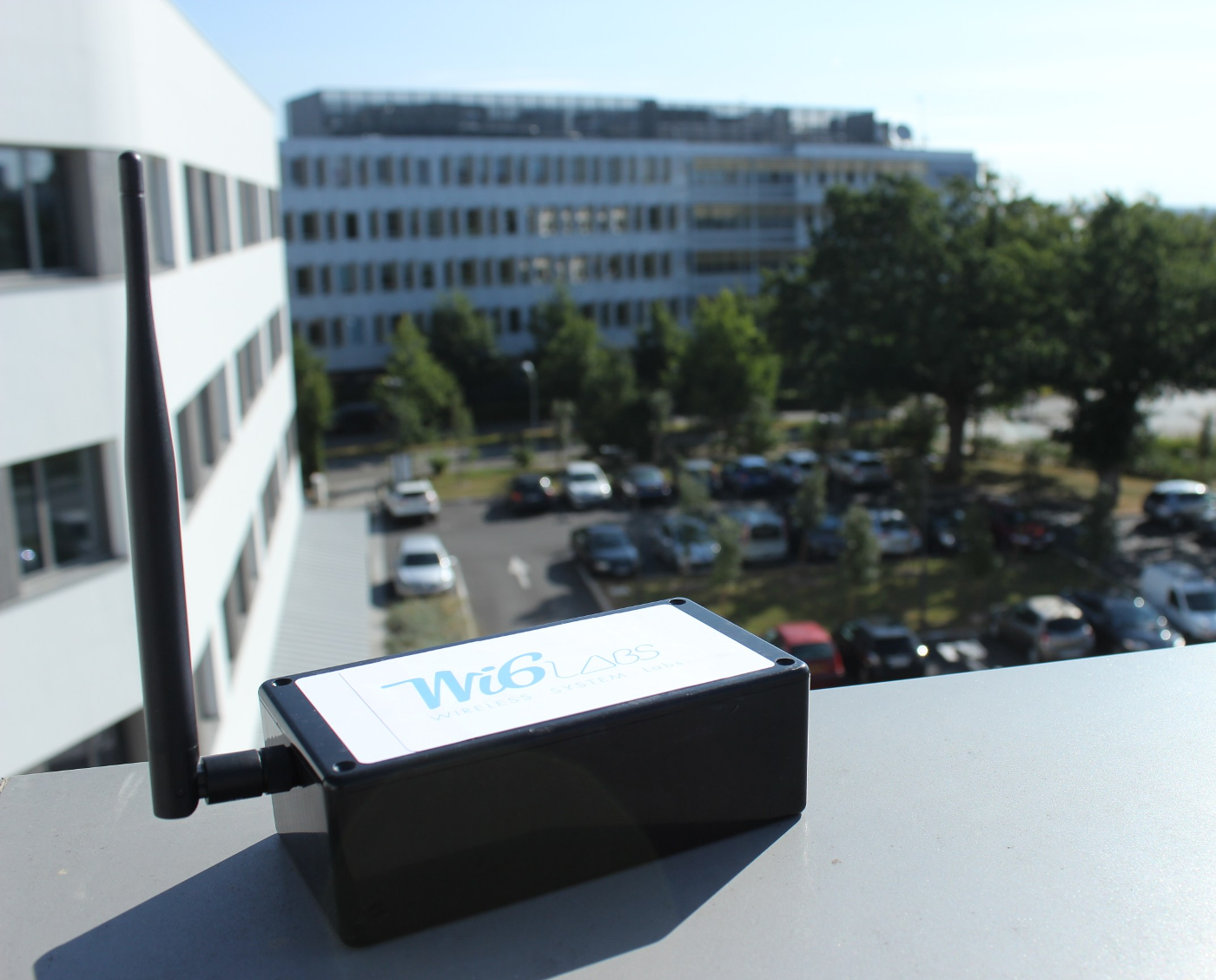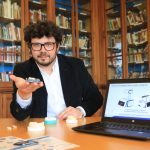Wi6labs: customized sensor networks
Wi6labs, a start-up incubated at IMT Atlantique, installs connected sensor networks for municipalities and industries. What makes this startup so unique? It offers custom-developed private networks that are easy to install. When it comes to controlling energy networks, water supply and monitoring air quality, the solution proposed by Wi6labs is attractive due to its simplicity and the savings it offers. The startup is part of the IMT delegation to CES 2019 in Las Vegas.
It all started three years ago. In July 2016, the mayor of Saint-Sulpice-la-Forêt, a municipality located 10km northeast of Rennes, France, became aware of a leak in the city’s water system. For one year, the municipality’s water bill had been constantly increasing. All in all, the water leaked was equivalent to 26 Olympic-sized swimming pools. The fact that this leak was discovered came as a relief to the mayor. But how could he prevent undetected occurrences like this from happening again? To avoid wasting more water, Saint-Sulpice-la-Forêt contacted a local start-up: Wi6labs.
“We proposed installing sensors in the water system,” recalls the start-up’s founder, Ulrich Rousseau. “In just one night, these objects can detect and locate a leak.” Satisfied with the results, the mayor renewed the partnership to monitor the temperature and energy consumption in public buildings. The sensor network revealed, for example, that the town’s school was being heated at night and during school vacations. By adapting its practices based on data from the connected sensors, the municipality saved €7,400 of its annual energy expenditure of €50,000 over the next year. “The investment of €20,000 for installing our solution paid for itself in three years,” Ulrich Rousseau explains.
For Wi6labs, the Saint-Sulpice-la-Forêt experience was a pilot experiment used to test the start-up’s relevance. The operation’s success allowed them to propose this solution to other local municipalities and companies. Each time, there was a common theme: a water leak. “It’s our starting point with customers. They all deal with this problem and are convinced that our approach will help them manage it,” he explains. Once the system is installed for the water meter and the initial data is retrieved, the changes in practices aimed at reducing the water bill provide convincing proof for continuing with the operation.
The start-up then eventually offers its customers solutions for monitoring air quality and adjusting gas consumption. In their partnership with Keolis, a public transport operator, Wi6labs developed a sensor network to inform the company of the number of passengers using its buses in real time. “We study specific cases, for both municipalities and companies, and we respond with a customized solution that meets a wide range of needs,” Ulrich Rousseau explains.
Wi6labs conquers dead zones
All the start-up’s solutions are built on its product Wiotys, a platform used to control a LPWAN network. These low-power, long-range networks enable communication between connected objects. Wiotys makes it possible to install sensor networks that are independent and isolated. In other words, the sensors used by Saint-Sulpice-la-Forêt only communicate amongst themselves and are controlled locally. This approach is therefore different from those used by telecommunication operators like Orange and Bouygues, which deploy national networks connecting the sensors.
This difference has vast implications. First, there are the advantages. Wiotys networks are not limited by the dead zones in the major operators’ networks. Saint-Sulpice-la-Forêt, for example, does not benefit from any LPWAN networks from national operators. It is therefore impossible to connect their sensors to a national network. Secondly, this allows them to create custom solutions. For example, if a company wants to charge its customers based on data from a sensor, it must send information through the network’s downlink channel, in other words, in the opposite direction from the uplink channel, which sends information from the sensor to the platform. “Operators are not comfortable doing this because it is expensive to reserve part of the network for downlink data transmission to the sensor. For us, it is simply a question of taking this need into account when dimensioning the network,” Ulrich Rousseau explains.
However, they cannot offer some of the features operators can. This is the case with roaming—a sensor’s capacity to switch from one connection terminal to another as it moves. “For our customers, this is not generally a problem, since water meters and air sensors are stationary,” the founder of Wi6labs explains. The start-up has strategically chosen to eliminate certain complex features to make the installation easier. “What we sell our customers is a quick solution that is easy to deploy. It’s a little like installing a router at home: you plug it in, and it works.”
Today, Ulrich Rousseau assures us that the start-up no longer experiences any technological barriers. Its use cases have involved working 20 meters underground and responding to complex requests from customers. The true limit is that of social acceptability, especially for municipalities. “All of the sudden, we must explain to the civil servant who used to enter meter readings into an Excel spreadsheet that our sensors will be taking over this task,” Ulrich Rousseau explains. “We have to change his tasks and train him to learn how to control the sensors.”
These are no small changes for civil servants who for years have performed tasks unrelated to digital technology. For a municipality, this also requires adjustments to integrate training time and new tasks for civil servants. Social resistance can therefore by significant and the legitimacy of these reactions should not be minimized. According to Ulrich Rousseau, Wi6labs is also responsible for explaining the significant and valuable results of these changes. “We must be educators. For us, this involves showing local citizens and civil servants the savings in euros for the municipality in practical terms, rather than talking about kilowatt hours.” In essence: changing citizens’ perception of energy to increase their awareness of the energy and environmental transition.





Leave a Reply
Want to join the discussion?Feel free to contribute!